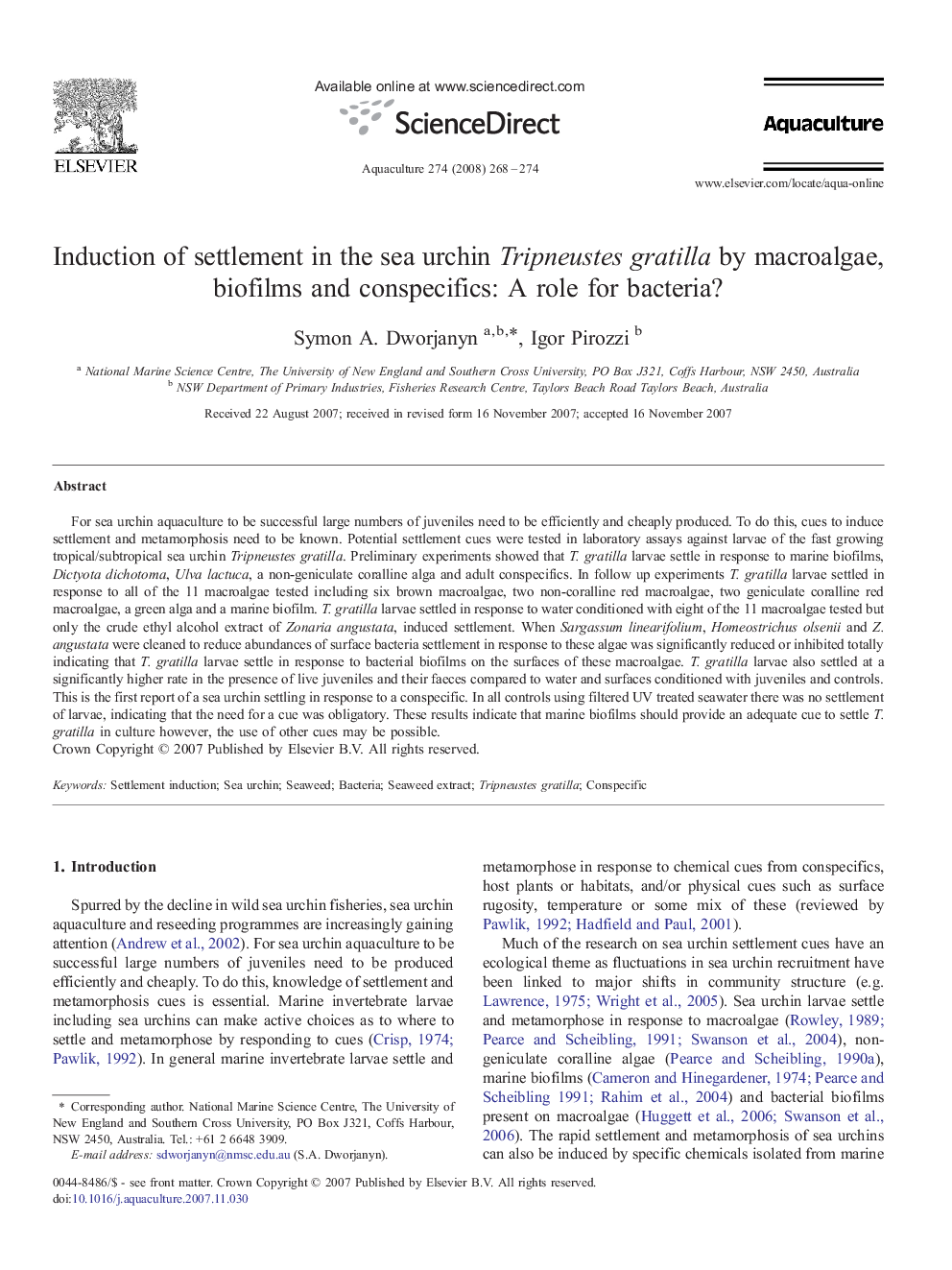| Article ID | Journal | Published Year | Pages | File Type |
|---|---|---|---|---|
| 2424596 | Aquaculture | 2008 | 7 Pages |
For sea urchin aquaculture to be successful large numbers of juveniles need to be efficiently and cheaply produced. To do this, cues to induce settlement and metamorphosis need to be known. Potential settlement cues were tested in laboratory assays against larvae of the fast growing tropical/subtropical sea urchin Tripneustes gratilla. Preliminary experiments showed that T. gratilla larvae settle in response to marine biofilms, Dictyota dichotoma, Ulva lactuca, a non-geniculate coralline alga and adult conspecifics. In follow up experiments T. gratilla larvae settled in response to all of the 11 macroalgae tested including six brown macroalgae, two non-coralline red macroalgae, two geniculate coralline red macroalgae, a green alga and a marine biofilm. T. gratilla larvae settled in response to water conditioned with eight of the 11 macroalgae tested but only the crude ethyl alcohol extract of Zonaria angustata, induced settlement. When Sargassum linearifolium, Homeostrichus olsenii and Z. angustata were cleaned to reduce abundances of surface bacteria settlement in response to these algae was significantly reduced or inhibited totally indicating that T. gratilla larvae settle in response to bacterial biofilms on the surfaces of these macroalgae. T. gratilla larvae also settled at a significantly higher rate in the presence of live juveniles and their faeces compared to water and surfaces conditioned with juveniles and controls. This is the first report of a sea urchin settling in response to a conspecific. In all controls using filtered UV treated seawater there was no settlement of larvae, indicating that the need for a cue was obligatory. These results indicate that marine biofilms should provide an adequate cue to settle T. gratilla in culture however, the use of other cues may be possible.
